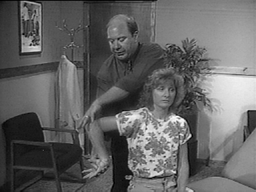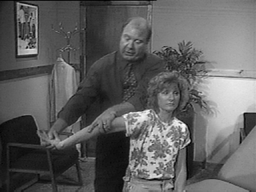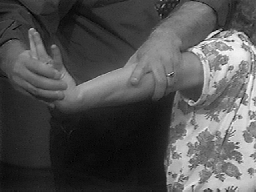Manual Therapy Online
Technique Peek - Tennis Elbow
Primary tennis elbow probably is not that common. It is unusual to come across patients who have a discrete history of a lateral elbow injury or unfamiliar overuse. More commonly, the overuse, if it is present, is minor or is not unfamiliar. If an external cause cannot be demonstrated from the history then internal changes must be addressed in the examination. Common remote causal or contributive sites include the cervical spine, the elbow itself and the wrist. Neurophysiological, neurological or mechanical links exist between these sites and can be associated with the pathology.
C5/6 dysfunction producing compression of the spinal nerve or root can lead to reduction in axoplasmic flow with consequent trophic malnutrition and weakening of the collagen in the tendon or muscle. Additionally, such compression may reduce neuromuscular co-ordination to the point where damage occurs with repeated contractions. Segmental facilitation may cause neuromuscular incoordination and/or hypertonicity with resulting damage.
Abduction subluxation of the ulnohumeral joint results in the hand drifting into ulna deviation with subsequent loss of extension and radial deviation. The theory goes that the abnormal proprioception from the wrist due to the hypomobility leads to excessively forceful contractions of the radial extensors and deviators and subsequent overuse. Wrist hypomobility directly results in the same problem.
Tennis elbow of cervical origin may be checked by re-testing isometric wrist extension with the head in different positions. If the elbow pain is completely eliminated during this testing, there is no pathology at the elbow and no local treatment is required. However, as is more usual, the pain is reduced indicating that there is a contribution from the neck but there is also local pathology that requires treatment.
Testing the elbow quadrant will demonstrate the possibility of an abducted ulna and more detailed testing will confirm it. Fanning and folding of the wrist will screen for wrist dysfunctions and again a detailed biomechanical examination will demonstrate the hypomobility.
Treatment
Treatment of the local pathology may include deep transverse frictions, manipulation, stretching, electrical muscle stimulation and eccentric exercises. In addition, if there is an abducted ulna, this must be manipulated so that the normal motion is restored to the elbow and wrist.
Remote treatment includes mobilization or manipulation of the neck or the wrist together with the other usual rehabilitation procedures for these areas.
Mills Manipulation

The purpose of manipulation is to tear the scar tissue and elongate it. This prevents normal use from repeatedly re-injuring the healing tissue and limiting improvement. Before manipulating the elbow, the therapist must ensure that full range extension is available when the wrist is flexed, elbow flexion should be limited. If either of these two situations do not exist then manipulation should not be carried out as it will cause a traumatic arthritis. Prior to the manipulation, which is of most use in epicondylar tennis elbow, deep transverse frictions helps soften the tissue making the manipulation more effective. At all times during the manipulation, wrist flexion is maintained at its full range.
The therapist must stand directly behind the patient so that as the elbow is extended, the wrist is not flexed. The arm is taken via the shoulder, directly away from the side not backwards while wrist flexion is strongly maintained.

The elbow is slowly extended while wrist flexion is maintained at full range until the end of the range is reached and the patient can feel the stretch on the tendon and muscle and possibly have the pain reproduced. If spasm intervenes, the manipulation is not carried out and anti-inflammatory modalities initiated.

The thrust is a very careful high velocity extension technique where the hand over the olecranon pushes downwards while the hand holding the wrist pulls up. No sound should be heard and there should be little in the way of post-manipulative soreness.
Featured Course
FREE COURSE
Foundations of Expertise
Date:
Starting March 24, 2024
Location: Online
LEARN MORE



